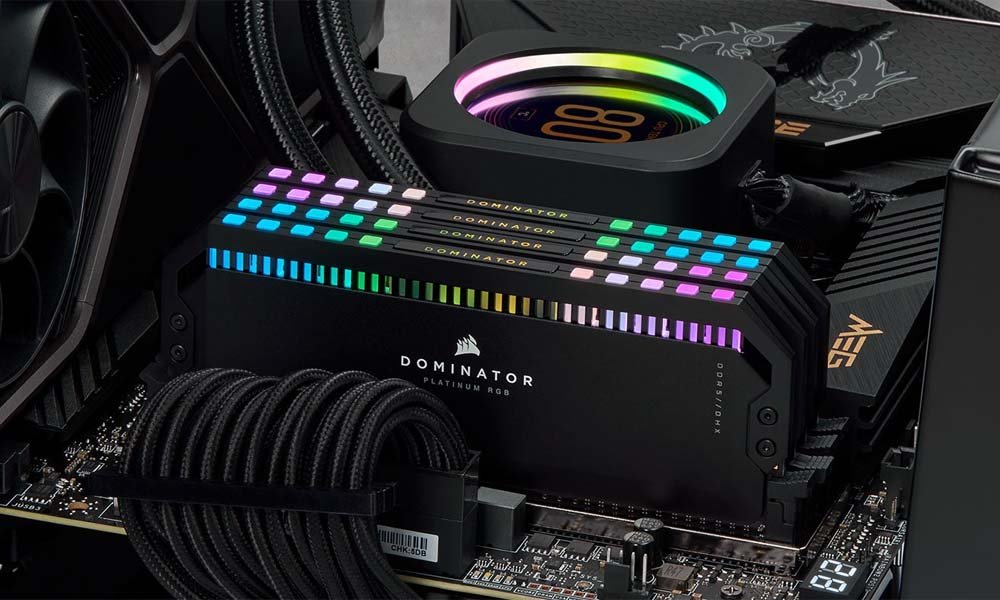Everything You Need to Know About Computer RAM Leave a comment

Every computing device you’ve ever used uses a variety of memory types, RAM being maybe the most well-known of them all. RAM, short for random access memory, is a type of temporary storage that computers employ for a number of applications.
RAM is just one of many topics we’ll discuss with you at Micron Computers if you’re wanting to personalize one of our desktop or laptop computers for sale. What is RAM actually, what are its main purposes, and what other information is relevant to this topic? This is a basic overview.
RAM Basics
RAM, or random access memory, is a sort of storage that can be found in everything from your smartphone to the computer you’re using to read this post, as we just mentioned. RAM is mostly used to temporarily store data, such as files and applications, that you want to have easy access to when using your laptop or desktop computer for particular tasks.

RAM is usually kept apart from the location on your computer where “permanent” data, such files and installed applications, are kept. RAM is one of the parts of your computer that loses power when you switch it off, so you might have to wait a few seconds for it to boot up and load all of your open apps when you turn it back on.
The number of open jobs on your computer depends on the amount of RAM it has; if you play games or run a lot of resource-intensive programs, for example, you’ll need more RAM to make sure everything works properly. You may use the Control Panel or system properties to find out how much RAM your computer has.
Example of How RAM Works
Suppose that you have just turned on your computer and would like to pass the time until it boots up by playing a game. Your computer can only load your storage device at this time, which is your hard disk, because it is loading. That means there is currently nothing accessible in terms of memory consumption.
There’s an equilibrium that happens when Windows invites you to log in after it has finished loading completely. Windows releases some memory for your game to use since it needs a specific amount of RAM to operate properly. You can learn more about memory addressing here. Everything will function as intended as long as you don’t attempt to launch another application while the game is active.

However, your computer will have to reload the game from your storage device into RAM if you Alt+Tab out of the game to launch a new application. This can take some time, and if the game isn’t able to return to memory quickly enough, it might even crash.
That’s just one instance of how the extra memory that becomes accessible as soon as your computer boots up can be removed. Because of this, resource-intensive apps require a sufficient amount of RAM in order to avoid using up all the resources!
Desktop Vs Laptop RAM
The RAM configurations of desktops and laptops will typically differ due to their significant differences in size and space. The physical RAM component found in laptops is around the size of a small coin, and it is made to fit into particular connectors or slots on your motherboard.

Therefore, the only way to upgrade the RAM in your laptop is usually to purchase something that meets those specs. Upgrading RAM on a desktop computer is significantly simpler: all you need to do is find a compatible module that will physically fit into your available memory banks. Though there may be some variation, desktop RAM components are typically twice as large as their laptop equivalents.
Volatile Vs. Non-Volatile Memory
Memory that is volatile is memory that is erased when the power is cut off. One type of volatile memory is RAM.
Non-volatile memory: Hard drives are an example of memory that keeps its contents even after the power is turned off.

NVRAM is a shorthand used to refer to several types of non-volatile memory in specific situations. They are not to be confused with conventional RAM, which is always volatile, nevertheless. Anything that is saved in RAM is permanently deleted when your computer is switched off. For this reason, if you’re playing a game and want to save your progress, you’ll need to Alt+Tab out of the game and save it to your storage device; otherwise, all of your game progress will be lost since the last save.
Connection of Latency and Speed to RAM
In computer terminology, latency refers to the amount of time the computer takes to process a command. Having enough RAM is crucial for cutting down on latency since it speeds up the reading and writing of data on your computer.

Throughput is the rate at which the central processor unit (CPU) of your computer can read or write data. Once more, boosting memory availability without taxing the CPU’s capacity will aid in boosting throughput.
In summary, increasing memory use and shortening the distance between the CPU and RAM can both lower latency. Usually, to accomplish this, you can install more RAM modules by increasing the amount of memory banks your motherboard has available for installation.
Speak with the staff at Micron Computers today to find out more about RAM and its use in computing devices, as well as about any of our available computers for purchase or computer repair services.


